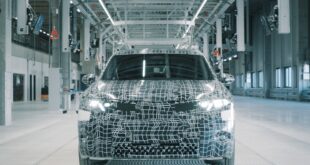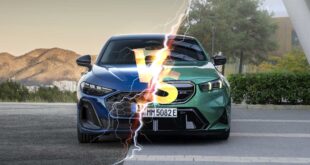 Autonews published a short yet very informative summary of the BMW Megacity Vehicle expected to be released in 2013 and other cars under the development of Project i. As BMW moves towards the development of future mobility, people are becoming more curious of what these vehicles will actually look and feel like. BMW promises sheer driving pleasure together with sustainability. This summary includes an analysis of vehicle structure, materials, manufacturing, recycling, and consumer financing:
Autonews published a short yet very informative summary of the BMW Megacity Vehicle expected to be released in 2013 and other cars under the development of Project i. As BMW moves towards the development of future mobility, people are becoming more curious of what these vehicles will actually look and feel like. BMW promises sheer driving pleasure together with sustainability. This summary includes an analysis of vehicle structure, materials, manufacturing, recycling, and consumer financing:
— Vehicle structure: Unlike most other small cars, the Megacity will not be a unibody vehicle. Instead, its structure will resemble that of a body-on-frame vehicle. BMW describes the design as “two horizontally separated independent modules.”
The lower half is the “drive” module — an aluminum chassis that melds the battery, electric drive system and crash structure. A high-strength, lightweight, carbon fiber passenger compartment is attached on top. The key benefit is weight reduction, a prime consideration in reducing the weight and cost of the battery, while providing sufficient range, Draeger said.
— Materials and manufacturing: Draeger said BMW will push suppliers for 100 percent recyclability of parts. Innovative use of weight-saving carbon fiber is a key to making the design work. BMW has partnered with SGL Automotive Carbon Fibers to build a carbon fiber plant in Moses Lake, Wash.
He added that carbon fiber-reinforced plastic parts will be impregnated with color, removing the need for a paint shop. That will reduce energy use and emissions.
BMW will go to great lengths to reduce the cost of carbon fiber. BMW’s process involves reuse of scrap, enabled by a new technique of turning carbon strands into sheets of fiber, Stuermer said. BMW will use a new “quasi-stamping process” to make smaller carbon fiber-reinforced plastic parts than automakers normally use, saving cost and time.
— Recycling: BMW will design the vehicle for recycling, Draeger said. But, he said, with the Megacity’s design, its life cycle might be extended beyond current expectations.
“We could re-skin it,” he said. “We could recycle the body-in-white [exterior shell], although we are still working on that.”
— Consumer financing: BMW AG CEO Norbert Reithofer has said the company’s initial EVs will be expensive and will probably lose money. That may spur the company to come up with extended leasing, perhaps with mandatory vehicle recycling, Stuermer said.
Otherwise, the cost of the car would be a barrier, he said: “The consumer is looking at a small car with unproven technology that’s likely to carry a very large price ticket. If you want to get into everyone’s garage, you need to reduce the risk of ownership.
Source: Autonews
 BMW.SG | BMW Singapore Owners Community The Ultimate BMW Community – Established Since 2001
BMW.SG | BMW Singapore Owners Community The Ultimate BMW Community – Established Since 2001













